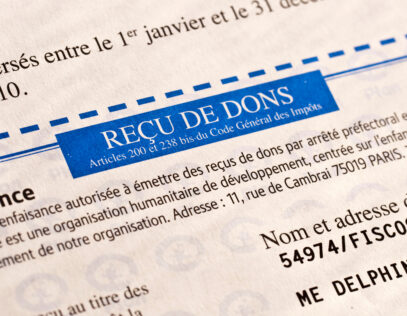It’s no secret that every tax authority around the world is on the lookout for base erosion and profit shifting (BEPS). Yes, we’re a broken record, but spare us the yawning. The truth is you can’t really blame tax authorities for trying to intercept—or recoup—tax dollars lost to profit shifting.
After all, at last count, the Tax Justice Network estimated that $427 billion is lost to profit shifting every year.
Obviously, tax administrations see transfer pricing as a particularly strategic way for multinational companies to move profits into low or no-tax jurisdictions and intercompany transactions involving intangibles—those extremely valuable assets that you can’t see or touch—are high on BEPS radar.
Why? For years, transfer pricing transactions involving intangibles have proven a relatively stealth way to shift profits to low- or no-tax jurisdictions.
Assign ownership of intangible assets to a tax haven-based shell company—a legal office with little or no business activities and staff—and guess where profits related to that intangible land? You got it—in that same low- or no-tax country. How convenient.
The OECD referred to that kind of loosey-goosey valuation as “form over substance” and in 2015, devised a strategy to link profits related to intangibles not to company ownership (especially if that company is a mailbox and not much else), but to value creation. Enter the DEMPE functions: development, enhancement, maintenance, protection, and exploitation.
IP can be a company’s greatest asset and if the legal owners of intangible property aren’t contributing to the development, enhancement, maintenance, protection, and exploitation of those intangibles, then, the OECD says, owners aren’t entitled to the profits they generate.
Of course, a legal owner doesn’t have to perform all the DEMPE functions to be renumerated for them, but how much they, as well as other entities, contribute determines their share of reward.
So, when conducting a functional analysis, you’ll need to evaluate the DEMPE functions to see where the value of those intangible assets—brands, trademarks, know-how, formulas, patents, and so on—are really created. What do you look for? How do you get it right? Here’s a guide.
The Step-by-Step Guide to Evaluate the DEMPE
Development:
Development of intangible assets may straddle more than one entity. For example, let’s say TV Electronics Corp. is the U.S.-based parent of an AI-powered, self-driving TV remote control company (no more scrolling through Netflix, the remote will pick a show for you. And turn off the TV when it decides you really should go to bed).
A U.S. entity, Autonomous Remotes Corp. (ARC), legally owns this popular TV remote brand and leases technology licenses from third parties. An Italian entity, ARC-Italy, makes and distributes the remotes and develops the online platform, while a Japanese entity updates and reviews the product line to stay ahead in the lucrative TV remote-control game.
Still with me? In this scenario, there are a lot of intangible assets at play: procuring third-party licenses so the product could be built in the first place, promotion, quality-control, manufacturing know-how, the brand’s trademark, and monitoring those license agreements to protect the IP.
In terms of transfer pricing, the question is: Which entities are contributing to the development of the IP and how much?
The U.S. entity procured the third-party licenses. The Italian manufacturer developed the quality standards for the remote control and online promotions may have increased the value of the brand.
Meanwhile, the Japanese entity is developing research and watching for new technologies (maybe a remote control that can bring you a beer?), which could enhance the product even more.
The point? Just because the U.S. entity, ARC, legally owns the remote-control brand doesn’t mean that it’s the only entity contributing to the development and therefore, it shouldn’t be the only one to receive profits related to it.
Enhancement:
Developing IP is just the beginning—intangible assets need to evolve to stay competitive. So, you’ll want to know which entities are enhancing IP related to the product—and most importantly, how? In terms of the remote-control company, we’d ask, “Who is making sure the licenses are up to date? Which entity is building customer relations? Responding to customer feedback? Offering a good sales experience? Keeping track of performance issues?
Again, understanding IP valuations transcends legal ownership. Sure, the U.S. entity monitors the licenses and makes sure the brand is still a trusted name. However, the Italian entity monitors quality control of production, promotion, and the know-how behind manufacturing the product.
And that Japanese entity monitors client feedback to fix quirks and make the product better. Indeed, the U.S. entity owns the brand, but in terms of enhancing IP, it takes a village.
Maintenance:
Maintaining IP can be key to a product’s survival. Who improves manufacturing processes? Who promotes the brand and maintains its value? Who updates the technology used to make that must-have remote control?
The U.S. entity maintains the brand’s value through marketing and advertising. The Italian manufacturer improves manufacturing processes, and the Japanese entity monitors the competition to see how to stay ahead.
Each entity has a role in maintaining the value of the IP. The question is which entity contributes the most value? The answer to that will help determine how profits are split.
Protection:
Protecting an intangible asset can mean anything from patenting manufacturing expertise to registering a brand’s trademark. All protections—and the entities responsible for them—should be considered during a functional analysis.
In our TV remote example, the U.S. entity keeps track of the licensing agreements and registers the brand trademark. The Italian manufacturer patents the production know-how and ensures customer privacy protections in online ordering. The Japanese entity has an eye on the competition, protecting the product from falling behind and losing market share.
Exploitation:
How a company makes money from its IP is what exploitation is all about. Does it promote the product? Did it introduce the product to market? Does it promote it alongside other reputable products?
Exploitation affects the value of the intangible and knowing which entities contribute to it, along with the other DEMPE functions, will shed light on where value is created.
The name on our TV remote, no doubt, has helped sell the product (thanks, U.S. entity). The Italian entity’s online promotion and sales platform played a role, too. Here, the Japanese entity drops off a little, except for its research on product enhancement.
In the end, though, examining intangible assets’ DEMPE functions reveals a lot about how a product comes to life—and how IP in many forms, from various entities, may contribute to it. So, why would profits be reserved merely for ownership?







